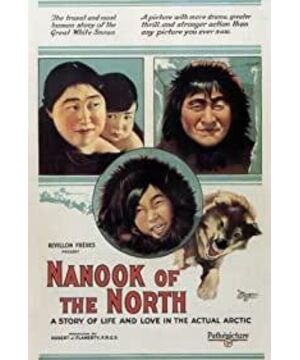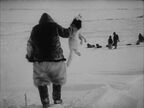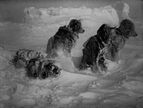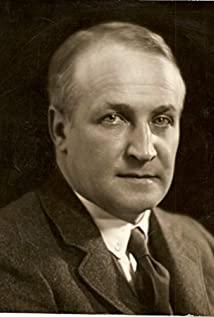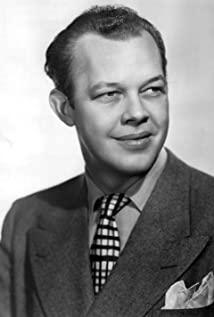When I was looking at it, I thought it was true. I saw the Nanook family get out of the boat one by one, "Hey—how come there?" It was obviously just a small boat, but it seemed like a bottomless pit underneath. There were always The child came out (and a puppy); watch them build igloo, so the igloo is built like this, after it is built with heavy snow blocks, a hole needs to be dug and filled with ice cubes, It is used as a window; when getting up in the morning, the wife must first use her teeth to soften her husband's boots to prevent the feet of the head of the family from freezing; the Eskimos hunt walruses and snow foxes in the most primitive way, using spears and ropes, they hunt from Not greedy, only hunts one of the herd, but maybe only because of limited ability.
I was deeply fascinated by their primitive way of life. Nanook and his family smiled so innocently at the camera. For them, life is only a matter of food and clothing. The only survival problem is-not enough food How to do? Fortunately, Nanook's hunting skills look good. The romantic feelings that Flaherty tried to express is not only a deafening feeling to me who lives in the 21st century, but also in the first world of the 1920s, the pan-industrialized and materialistic society, can also play the same role. effect. To a certain extent, I can understand Flaherty's insistence on "positioning". Movies have only been produced for more than a hundred years. Is the history before that abandoned just because of the rigid insistence on "reality" Did you ignore it? Movies are a very special way of documenting, and I'm grateful for a glimpse into those old romances.
This film is Flaherty's famous work, and it is also his most successful work. After that, "Moana" and "Aran Islander", although they are also romanticisms that reproduce history in Xanadu. The work has not been able to surpass this one. I wonder what makes Nanook of the North so special. In addition to being the first of its kind in romantic documentaries, my wishful thinking was that Nanook's death also made this film unique, at least in my mind.
Nanuk in the north, who delayed hunting due to filming, eventually died because he didn't store enough food for the winter. This made me wonder why Nanook took the documentary. As an Eskimo man with rich experience in Arctic life, he should not be unaware of the impact of this film on his normal life, but I I don't think he is the kind of person who will give up the "ego" in order to inherit the ancient history of the nation. Although the Eskimos have learned to hunt with shotguns in 1922, they do not have the national character to do so. I'm saddened by his death, because after just 80 minutes, I feel like I've known him for a long time, such a simple, good-natured man (not to mention that he fulfilled his various unreasonable demands for Flaherty's documentary, including I just built igloo, which was supposed to be 12 feet wide, into 25 feet. I failed again and again. I finally built it, and I could only build half of it. I performed the wake up bridge in the ice and snow), and died in order to make a documentary. Lost. Did Flaherty know this would be the outcome when he first decided to make the documentary? Did he know the price of his romanticism was the lives of the family? When he knew the bad news, did he doubt the original intention of his romanticism? Is it important to return to the utopia in which humans and nature live in harmony in order to fight against the industrialization era? Or compromise, compromise, let everyone in this world live in the moment? I know things don't always have to go to extremes, but I just can't help but get to the point.
Finally, I dedicate this review to Nanook of the North, without title.
View more about Nanook of the North reviews


